Navcam
Navcam, short for navigational camera, is a type of camera found on certain robotic rovers or spacecraft used for navigation without interfering with scientific instruments.[1][2][3] Navcams typically take wide angle photographs that are used to plan the next moves of the vehicle[4] or object tracking.[1]
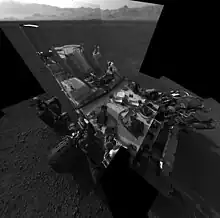
Overview
The Mars Curiosity rover has two pairs of black and white navigation cameras mounted on the mast to support ground navigation. The cameras have a 45 degree angle of view and use visible light to capture stereoscopic 3-D imagery.[5] These cameras, like those on the Mars Pathfinder missions support use of the ICER image compression format.
European Space Agency Rosetta spacecraft used a single camera with 5 degree field of view and 12 bit 1024x1024px resolution allowing for visual tracking on each of spacecraft approaches to the asteroids and finally the comet.[1]
Gallery
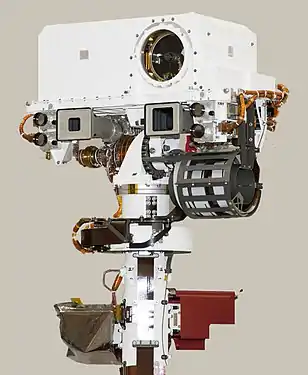 Curiosity rover's mast with two navcams
Curiosity rover's mast with two navcams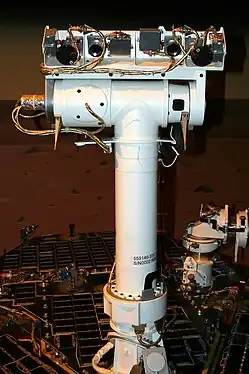 Mars Exploration Rover's mast with two Pancams (on its sides) and two navcams
Mars Exploration Rover's mast with two Pancams (on its sides) and two navcams Example of photo made by Opportunity's navcam
Example of photo made by Opportunity's navcam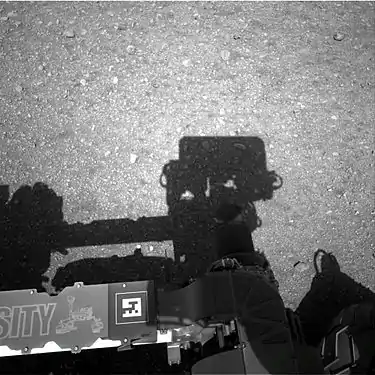 First photo made by Curiosity's navcam
First photo made by Curiosity's navcam
See also
References
- "Comet 67P/C-G in Rosetta's navigation camera". ESA. Retrieved 15 August 2015.
- "The rover's "eyes" and other "senses"". Mars Exploration Rover Mission. NASA Jet Propulsion Laboratory. Archived from the original on 7 March 2004. Retrieved 3 January 2013.
- "How A Team Of Scientists Dropped A One-Ton Science Lab On Mars Completely Unscathed". The Business Insider. 17 December 2012.
- "More Driving And Imaging At 'Matijevic Hill'". Space Daily. November 26, 2012.
- First NavCam mosaic
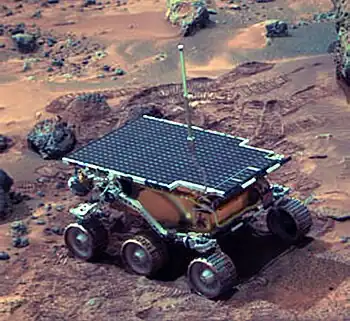

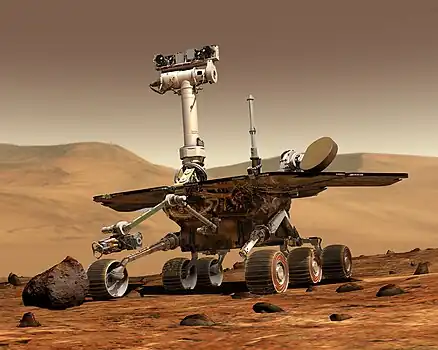
.jpg.webp)